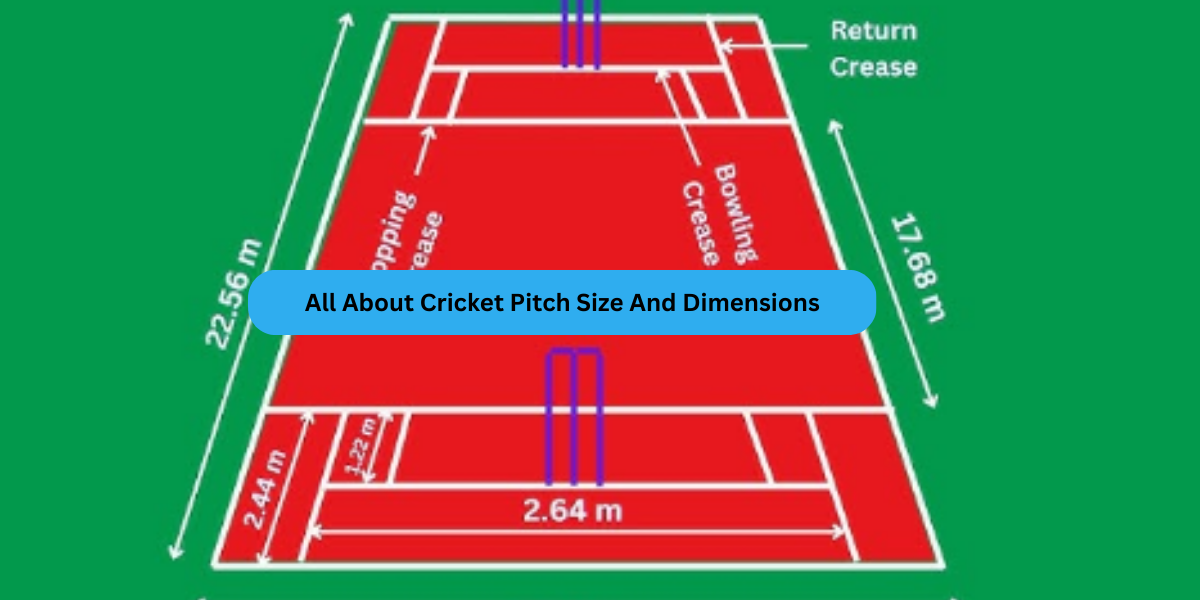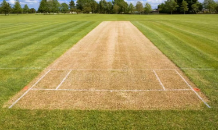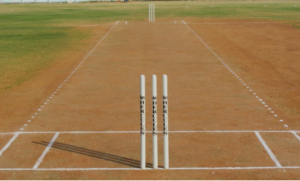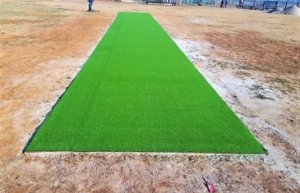Cricket, often referred to as a gentleman’s game, is a sport that thrives on precision, skill, and strategy. Central to the game’s mechanics is the cricket pitch, a carefully measured and maintained strip of land where bowlers and batsmen contest their skills. Understanding the dimensions and nuances of a cricket pitch is crucial for players, coaches, and enthusiasts alike. This article dives deep into the specifics of cricket pitch size and dimensions, answering common questions and providing actionable insights.
What Is a Cricket Pitch?
A Cricket Pitch Size is a rectangular strip of ground at the center of a cricket field. It serves as the stage for most of the game’s action, including bowling, batting, and running between wickets. The pitch’s dimensions, surface quality, and preparation directly influence how the game unfolds.
Key Features of a Cricket Pitch:
- Length: 22 yards (20.12 meters)
- Width: 10 feet (3.05 meters)
- Surface: Can be natural (grass) or artificial (concrete or synthetic).
Standard Dimensions of a Cricket Pitch
The International Cricket Council (ICC) has established regulations for cricket pitch dimensions, ensuring uniformity across all official matches. Below are the standard dimensions:
Pitch Length and Width
- Length: The distance between the stumps at either end of the pitch is 22 yards (66 feet or 20.12 meters). This measurement is consistent across all formats of the game.
- Width: The pitch is 10 feet (3.05 meters) wide.
Crease Markings
Crease markings play a critical role in defining the areas for bowlers and batsmen. The key crease markings include:
- Popping Crease: Drawn 4 feet (1.22 meters) in front of the stumps, it determines the batsman’s safe zone.
- Bowling Crease: Located at the stumps’ base, it is 8 feet 8 inches (2.64 meters) long.
- Return Crease: Perpendicular to the bowling crease, it extends 4 feet 4 inches (1.32 meters) behind the bowling crease on each side.
Stumps and Bails
The pitch’s ends are marked by three vertical stumps, topped with two horizontal bails. The stumps’ specifications are:
- Height: 28 inches (71.1 cm)
- Width (Total): 9 inches (22.86 cm)
Types of Cricket Pitches
Cricket pitches vary widely depending on their location, preparation, and purpose. Here are the most common types:
All About Cricket Pitch Size And Dimensions
1. Grass Pitch
- Description: Natural grass surface, commonly used in professional matches.
- Characteristics: Can favor bowlers or batsmen depending on its preparation.
- Examples: Green pitches assist seam bowlers, while flat pitches are more batsman-friendly.
2. Hard Pitch
- Description: Prepared with rolled clay or concrete, often covered with a mat.
- Characteristics: High bounce and pace, used for practice and amateur matches.
3. Dusty Pitch
- Description: Common in the Indian subcontinent.
- Characteristics: Offers turn and grip for spinners, challenging for fast bowlers.
4. Artificial Pitch
- Description: Made of synthetic material.
- Characteristics: Low maintenance, consistent surface, used for practice and non-professional games.
Factors Influencing Pitch Behavior
Several factors influence how a pitch behaves during a match. Understanding these can provide strategic advantages:
1. Soil Composition
- Clay-heavy pitches tend to be hard and bouncy.
- Sandy pitches may deteriorate faster, aiding spinners.
2. Moisture Levels
- Damp pitches can favor swing bowling.
- Dry pitches are more spin-friendly.
3. Grass Cover
The amount and type of grass on the pitch impact pace and seam movement.
4. Weather Conditions
- Humid conditions may enhance swing bowling.
- Sunny weather typically dries out pitches, making them more batting-friendly.
Pitch Preparation and Maintenance
Proper preparation and maintenance are vital for a cricket pitch’s longevity and performance. Here’s how groundskeepers manage it:
Steps in Pitch Preparation:
- Rolling: Compacts the surface, creating a hard and even playing field.
- Watering: Maintains moisture levels to prevent cracks.
- Grass Cutting: Ensures an appropriate grass height for desired playing conditions.
- Marking Creases: Uses chalk or white paint for clear visibility.
Maintenance Tips:
- Regularly remove debris and dead grass.
- Protect the pitch from excessive sunlight or rain with covers.
- Conduct soil testing to maintain optimal composition.
Common Questions About Cricket Pitch Dimensions
1. Are the dimensions of a cricket pitch the same for all formats?
Yes, the pitch dimensions remain consistent across Test, ODI, and T20 formats.
2. What is the significance of the 22-yard length?
The 22-yard length ensures a balance between bat and ball, making the game fair and competitive.
3. How does pitch size affect gameplay?
While the pitch size itself doesn’t change, its preparation (e.g., grass cover, moisture) significantly influences the game’s dynamics.
4. Are artificial pitches allowed in professional cricket?
No, artificial pitches are not permitted in official matches governed by the ICC.
Conclusion
The cricket pitch is much more than just a strip of land; it’s the heart of the game. From its precise dimensions to the factors influencing its behavior, every detail matters. Whether you’re a budding cricketer, a coach, or a fan, understanding the intricacies of a cricket pitch can deepen your appreciation of the sport. Keep these insights in mind next time you watch or play the game you’ll see the pitch in an entirely new light!





